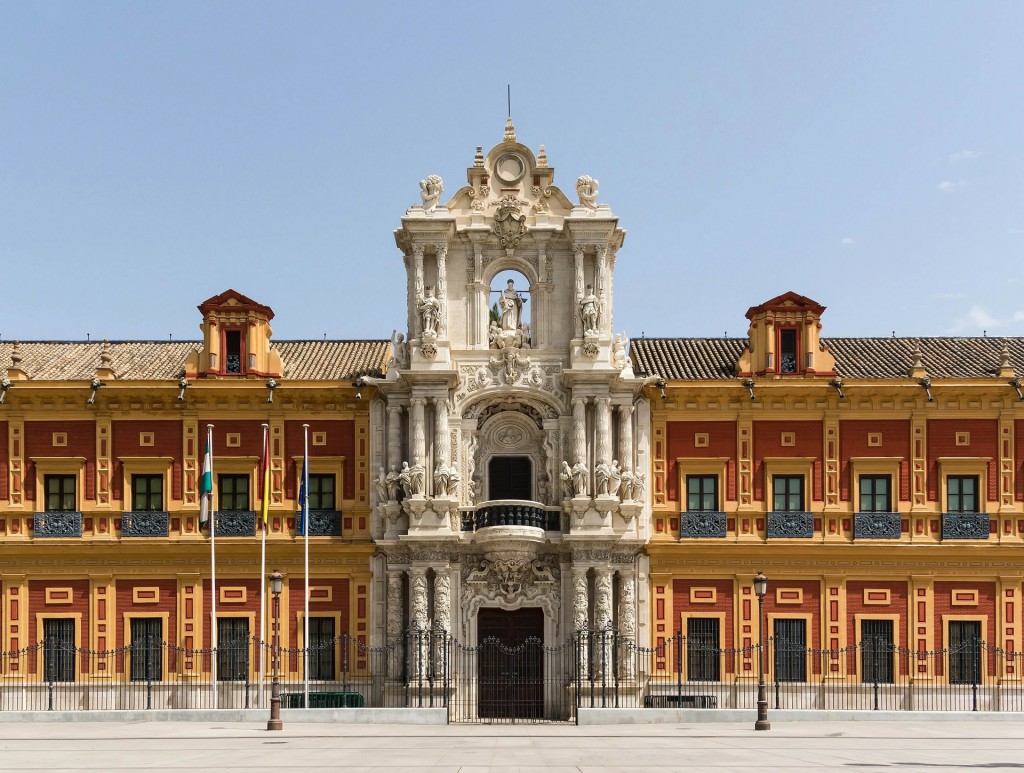Whether you are relocating to Spain or simply want to know more about the political system and Spanish government, this article provides a simple but comprehensive guide.
Introduction to the Spanish government and political system
Classified as a democratic constitutional monarchy, also known as a parliamentary monarchy, Spain has a democratically elected Prime Minister. The PM is the head of the Spanish government. The ruling monarch acts as the ceremonial head of state.
Following the end of the military rule and dictatorship of General Francisco Franco in 1975, the Spanish government transitioned to the current political system. This period lasted from 1975 to 1978 and is known as La Transición. Franco named Juan Carlos de Borbón as his successor to the monarchy, of which he had been de facto regent.
The transition involved the enactment of the Spanish constitution in 1978. This serves as the framework for the current national and regional political systems.
The ruling monarch is King Felipe VI. He came to the throne in 2014 following the abdication of his father Juan Carlos I. In June 2018, Pedro Sánchez, of the Spanish Socialist Workers’ Party (PSOE), became the head of the government of Spain.
Spain government: Separation of powers
The Spanish constitution, enacted in 1978, outlines the separation of powers into three branches: executive, legislative and judicial. The Spanish Constitution also advocates the values of freedom, justice, and equality, among many other pillars.
Executive
The head of the Spanish government, Prime Minister, leads the executive branch of Spain’s governmental system. This branch includes the deputy Prime Ministers and other ministers. After consultation with the Cortes (legislative branch), the monarch formally appoints the prime minister. In turn, the PM selects the cabinet ministers who are also formally appointed by the monarch.
The executive deals with domestic and foreign policy, including defence and economic policies. The Congress of Deputies can dismiss a prime minister through a vote of no confidence.
Legislative
Spain’s parliament, or the Cortes Generales, is the legislative branch and comprises two chambers. Like many parliamentary governments, there is a directly elected lower house, Congreso de los Diputados (Congress of Deputies) and an upper house, Senado (Senate).
Most of the power is vested in the lower chamber. The Congress of Deputies has 350 members, who are elected to four-year terms by national vote. The Senate is described in the constitution as the “chamber of territorial representation.” However, only around one-fifth of the senators are chosen as representatives of the autonomous communities. The remainder are elected from the 47 mainland provinces (with each province having four senators); the islands (the three largest having four and the smaller ones having one each), and Ceuta and Melilla (two each).
Judicial
Spain’s judges and magistrates make up the judicial branch and are independent, liable, and subject only to the rule of law. Twenty judges of the General Council nominate the president of the Tribunal Supremo (Supreme Court). These judges are appointed through a three-fifths vote in parliament.
There are different levels and types of courts. At the top is the Supreme Court, the country’s highest tribunal, which comprises five chambers. The National Court (Audiencia Nacional) has jurisdiction throughout Spain and is composed of three chambers (criminal, administrative, and labour).
Each autonomous community has its own high court of justice (Tribunal Superior de Justica). All the provinces have high courts called audiencias that try criminal cases. Below these are courts of first instance, courts of judicial proceedings (which do not pass sentences), penal courts, and municipal courts.
The Constitutional Court (Tribunal Constitucional) is not part of the judiciary. It is responsible for interpreting the constitution and the constitutionality of laws and for settling disputes between central and regional powers regarding constitutional affairs. The Constitutional Court has 12 members elected by three-fifths of both the Congress of Deputies and the Senate (four members each) and by the executive and the General Council (two members each).
Regional and local Spanish government

Junta de Andalucia – Autonomous Community
Under the national branches of government, Spain’s regions, or autonomous communities (Comunidades Autónomas) follow the same organisational lines. They each consist of an executive and a legislative body, with their own Statute of Autonomy, approved by the national parliament.
However, the exact structures vary between the communities. Furthermore, the “historic nationalities” in the Basque Country, Catalonia, and Galicia have more devolved power.
Autonomous Communities
There are 17 regions in Spain – known as autonomous communities (Comunidades Autónomas) – as well as two autonomous cities on the North African coast, Ceuta and Melilla.
The 1978 Constitution emphasised the right to autonomy and self-government for these communities. However, Spain is not a federal state such as the United States. Instead, it is a decentralised unitary country; the central Spanish government retains full sovereignty.
Each regional parliament has an executive branch – led by a regional president – and a legislative branch with its own Statute of Autonomy, approved by the national parliament. Each autonomous parliament has its own set of devolved powers.
The 17 autonomous communities are: the Basque Country, Catalonia, Galicia, Andalucía, Asturias, Aragon, Balearic Islands, Canary Islands, Cantabria, Castile and León, Castile-La Mancha, Extremadura, Navarra, La Rioja, and the regions of Madrid, Murcia, and Valencia. In 1995 two autonomous cities, Ceuta and Melilla, joined the list.
Local government
There are two further levels of Spanish government below the national and regional—provincias and municipios (provinces and municipalities). The Basic Law on Local Government (1985) sets out their powers and responsibilities.
There are more than 8,000 municipal governments (ayuntamientos). Each has a council, a commission (a kind of cabinet), and a mayor (alcalde). Municipal councillors are elected through a system of proportional representation. As in elections to the national parliament, votes are cast for party lists, not for individual candidates.
Municipal governments may pass specific local regulations so long as they conform to legislation of the national or regional parliament. While municipal governments receive funds from the central Spanish government and the regions, they can also levy their own taxes. In contrast, provincial governments cannot.
A provincial council (Diputación Provincial) is responsible for ensuring that municipalities cooperate with one another at the provincial level. There are no provincial councils in the autonomous regions that comprise one province (Asturias, Navarra, La Rioja, Cantabria, Madrid, and Murcia).
Political Parties in Spain
The main political parties in Spain are:
Partido Socialista Obrero Español (PSOE)
Founded in 1879 and known as the Spanish Socialist Workers’ Party in English, PSOE is the oldest party currently active in Spain. The party has a progressive ideology. The current leader is head of the Spanish government, Prime Minister Pedro Sanchez.
Partido Popular (PP)
Formed in 1976 by Manuel Fraga, the Popular Party (in English) has a liberal-conservative, Christian-democratic ideology. The founder was a professor under Franco’s regime. The party is currently in opposition and led by Pablo Casada.
Unidas Podemos (UP)
Previously known as Unidos Podemos, it is an alliance of smaller progressive parties. These include Podemos, Izquierda Unida, and other smaller parties. It came into being in the run-up to the 2016 general election. The party is in the current governing coalition with PSOE. UP is led by Yolanda Díaz Pérez.
Ciudadanos (Cs)
Known as Citizens in English, this party emerged in Catalonia in 2006. It is a liberal-conservative, pro-European party. The current party president is Inés Arrimadas.
Vox
Former members of the Partido Popular found this anti-immigration, nationalist party in 2013. Santiago Abascal leads Vox.
Political process and voting
Voting is open to all citizens aged 18 years or older. The Second Republic (1931-6) originally granted universal suffrage allowing women the right to vote. Franco revoked this, but as part of Spain’s transition the government at the time brought it back in 1977.
A General Election for a new Spanish government takes place every four years. Each of the 50 provinces serves as an electoral district. The number of deputies depends on the size of the population. Only Spanish citizens can vote in a General Election.
The Spanish government voting system uses proportional representation governed by the d’Hondt formula. Votes for a province-wide party list rather than for candidates representing individual constituencies. This formula favours large parties and less-populated areas.
Spain’s political landscape
The 20th century was a time of radical change and unrest in Spanish politics. The effects of the Franco dictatorship, Civil War and separatist battles continue to resonate.
We take a quick look at these particular events.
The Spanish Civil War
The Spanish Civil War (Guerra Civil) raged from 1936 to 1939, between Republican and Nationalist forces. Following the Nationalist victory, the country entered a period of military dictatorship, under General Franco.
Franco’s dictatorship continued until his death in 1975. During that time, he announced Spain as a monarchy and later named himself de facto regent. Following his death, under the reign of Juan Carlos I, the country transitioned to a constitutional democracy.
The Civil War continues to influence Spanish politics and society.
The Franco era
During his entire rule, Franco suppressed or tightly controlled non-government trade unions and all political opponents across the spectrum. Those means included everything up to and including violent police repression.
Official propaganda confined the role of women to family care and motherhood. Immediately after the civil war most progressive laws passed by the Republic aimed at gender equality.
Franco declared Spain a monarchy but did not install a king. Eventually, he took the title of de facto regent. Officially, Franco died a few minutes after midnight on 20 November 1975 from heart failure, at the age of 82.
Following his death, the major parties on both sides agreed to follow the Pact of Forgetting. To secure the transition to democracy, they agreed not to have investigations or prosecutions dealing with the civil war or Franco.
Recently, moves have been made to remove pro-Franco propaganda such as statues. However, families still fight for recognition of the atrocities that took place.
Regional separatism
Separatist movements in the Basque Country and Catalonia continue to be a source of political tension in Spain.
Basque separatism
The Basque Country in the north of Spain is an area with a distinct local identity, including its own language, Basque (vasco/Euskara), and culture. Following the 2020 elections in 2020, both the largest governing party and the largest opposition party in the regional Basque parliament are Basque nationalist parties.
However, it was during the 20th century that the movement gained international attention. The armed separatist group ETA (Euskadi Ta Askatasuna) conducted a series of fatal attacks across Spain from the late 1960s. It officially dissolved in 2018.
Catalan separatism
Catalan separatism has grown in recent decades. The region has a different local identity and its own recognised language or dialect. Catalan independence has a long history dating back as far as the founding of the first pro-independence party, Estat Català (Catalan State), in 1922.
A Catalan referendum for independence in 2017 saw an overwhelming majority vote Yes. Madrid did not recognise the vote and the regional leaders were sentenced to prison. The cases continue to this day.




